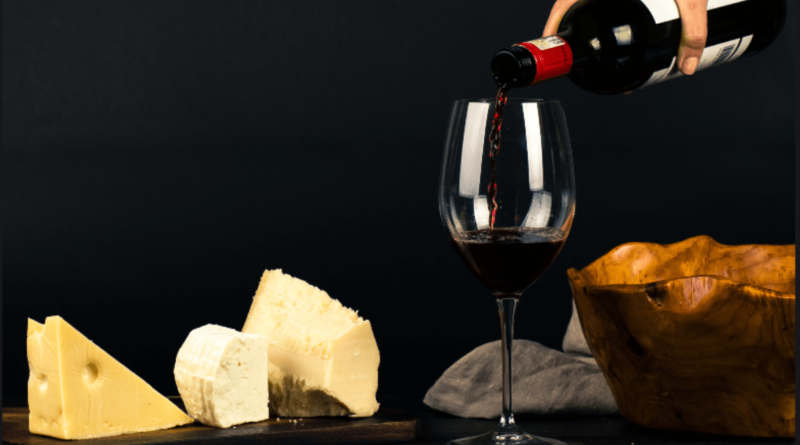How to Making Wine from Grapes?
Winemaking, the art of turning grapes into a delightful beverage, is a fascinating journey that combines science and craftsmanship. In this guide, we’ll explore the step-by-step process of making wine from grapes, ensuring you embark on a successful winemaking adventure right from your own home.
Introduction
Winemaking has been a cherished tradition for centuries, and making your wine from fresh grapes can be a rewarding experience. Whether you’re a wine enthusiast or a curious beginner, this guide will walk you through the process, demystifying the art of winemaking.
Choosing the Right Grapes
Not all grapes are created equal when it comes to winemaking. Discover the grape varieties that are ideal for different types of wines, and learn how to select the perfect grapes to achieve the flavor profile you desire.
Equipment Needed
Before diving into winemaking, gather the essential tools and equipment. From fermentation vessels to hydrometers, having the right gear ensures a smoother winemaking process.
- A 4-gallon plastic bucket with a safe lid for the main fermentation vessel
- Three 1-gallon glass jugs for secondary fermentation
- A funnel designed for glass bottle mouths
- Three compartments (fermentation traps)
- A rubber cork (or bung) for the secondary fermentation bottle
- A large draining bag made of nylon mesh
- Approximately 6 feet of clear half-inch plastic tubing
- Around 20 wine bottles (calculating five bottles per gallon of wine)
- Pre-sanitized corks in Number 9 size
- Consider inquiring about renting a hand corker from the wine supply store
- Include a hydrometer for measuring sugar levels
Step-by-Step Process
Breaking down the winemaking process into manageable steps, this section provides a comprehensive overview of what to expect at each stage of your winemaking journey.
Ingredient Checklist:
- Wine grapes
- Sugar
- Water
- Wine yeast
Process
- Start by removing as many grapes from the stems as you can handle without going crazy. Wash them thoroughly, discarding any rotting or squashed ones, along with any leaves, into the compost.
- Place the grapes in a bucket and proceed to squish them until you can’t squish anymore. You can even use your feet if you fancy, but remember to wash them first. For white grapes, consider using a sterilized straining bag to press them, avoiding the need to strain the juice later. Avoid using a fruit press or food processor, as broken pips can make the wine bitter.
- If you have white grapes, strain the mixture through a sterilized straining bag, muslin, or cheesecloth into a sterilized fermenting bucket. For red grapes, pour the contents of your ‘mashing’ bucket into a fermenting bucket.
- Crush one Campden Tablet for every 5 liters of juice, skins, and pulp (the must), stirring it with a sterilized paddle. This tablet helps eliminate ‘bad’ yeast in your grape juice. Decide whether to leave the natural yeasts or kill them off with the Campden Tablet, considering the risk of potential contamination.
- Cover loosely with a lid or tea towel to prevent fruit flies from entering. Wait 24 hours before adding sugar, as the sterilizing agents in Campden Tablets could interfere with the yeast.
- After 24 hours, add sugar. If using a hydrometer, follow the instructions; otherwise, add around 900 grams of granulated sugar per 4.5 liters of must. Stir well and adjust sugar levels if needed to achieve a reading between 1.080 and 1.090.
- Immediately after adding sugar, introduce your chosen wine yeast. You can also add yeast nutrients or a handful of raisins to assist the yeast.
- Cover with a clean cloth and loosely put the lid on top. Stir once a day with a sterilized paddle. For white wine, continue this for 8 days. For rose wine, strain off the skins after 2 days and proceed as with white wine. For red wine, leave the skins for the full 8 days.
- Strain the must into a sterilized demijohn or a fermenting bucket with a tight-fitting lid and an airlock hole.
- Fill the sterilized airlock with water and fit it to the bucket lid. If using a demijohn, you’ll need a sterilized bung for the airlock.
- Place the vessel in a warm area (80-85°F /26-30°C) for approximately 8 weeks. The airlock bubbling indicates the fermentation process is active. Do not open the lid or airlock during this time.
- Once fermentation is complete (no more bubbling), rack the wine off the sediment into a sterile vessel. Add 1 crushed Campden Tablet per demijohn, refit the airlock and bung, and wait for 24 hours.
- Transfer the wine into bottles and seal them. Label and store your homemade wine.
Conclusion
Embarking on the journey of making wine from grapes is an exciting endeavor. From selecting the right grapes to savoring the final product, this guide equips you with the knowledge and confidence to create your exceptional homemade wine. Now, armed with this information, let the winemaking adventure begin!




